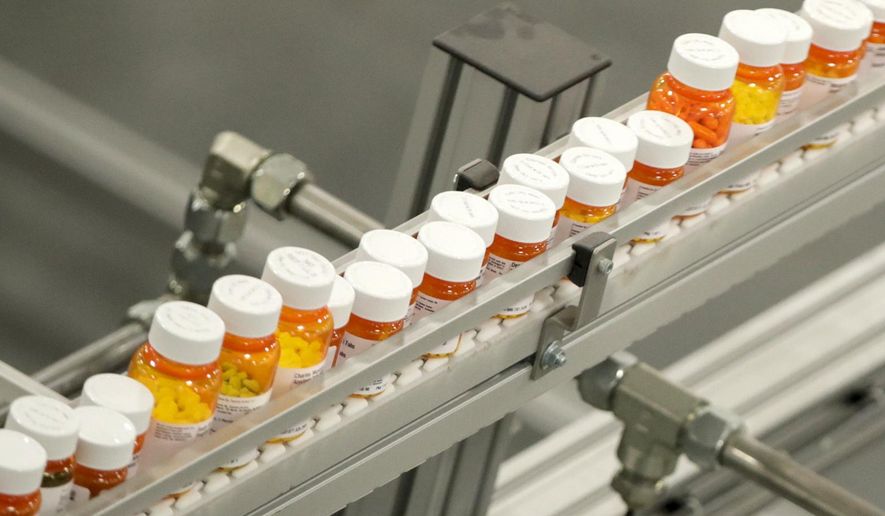Congressional lawmakers and health care advocates are sounding the alarm that prescription drug shortages this year increased to the highest level in nearly a decade.
Sen. Elizabeth Warren, Massachusetts Democrat, called the problem “devastating.”
Quality issues, lousy market incentives and panic buying are fueling shortages of cancer drugs, ADHD medicines and critical antibiotics.
Multiple factors contribute to the shortages, including manufacturing disruptions that have ripple effects downstream and low prices for generic drugs that give manufacturers little incentive to invest in resilient supply chains.
The shortages have parents phoning every pharmacy in their area to find generic Adderall for their children and cancer patients traveling long distances in search of chemotherapy.
“There is always an undercurrent of drug shortages, unfortunately, just with the way our system is set up. Occasionally, it spikes. This year is certainly a spike,” said Emily Tucker, an assistant professor of industrial engineering at Clemson University who tracks the issue.
Rep. Earl L. Carter, a Georgia Republican who is a pharmacist, is pushing a bipartisan bill that would require the federal government to help stockpile 50 essential generic drugs.
“The United States is dependent on China for our life-saving medications, which gives its communist regime influence over Americans’ health and well-being. By stockpiling essential medicines, the same way we do oil and other vital resources, we will ensure that medicines are available to patients, regardless of supply chain crunches or international conflicts,” Mr. Carter told The Washington Times.
An American Cancer Society Cancer Action Network survey this fall found that 1 in 10 cancer patients in active treatment has been affected by recent drug shortages. Medicaid patients are even more likely to be affected, with 18% confronting shortages.
About two-thirds of affected patients said they have had difficulty finding substitute medicines, and 6 in 10 saw treatment delays.
One cancer patient in rural Wisconsin had to drive an extra 2 hours — each way — after her local clinic didn’t have enough of a chemotherapy drug, according to the cancer center.
The dearth of drugs such as carboplatin or cisplatin, used in treating cancer, can be linked in part to quality issues at a major plant in India late last year. U.S. inspectors found failures in its quality control process, resulting in a temporary shutdown.
Other companies stepped up to fill the supply void, though health systems and doctors tried to snap up what was available, leading to supply imbalances because of panic buying.
The generic form of Adderall, for attention deficit hyperactivity disorder, has been affected as supply chains failed to keep up with the rising demand.
Dr. Max Wiznitzer, a pediatric neurologist at Rainbow Babies and Children’s Hospital in Cleveland, Ohio, said hiccups at a major manufacturer in 2021 started a domino effect sending patients scrambling for alternative forms of the drug.
There is also rising demand. Adults are increasingly diagnosed with ADHD, particularly after they dealt with the lack of office structure during the COVID-19 crisis. Parents started to recognize the condition in their kids, too, while they were home from school.
“People said, ‘Oh my gosh, I see what the teachers are talking about.’ So the pandemic accelerated this,” said Dr. Wiznitzer, who is co-chairman of an ADHD advocacy group.
Brand-name drugs aren’t affected as much by shortages because they have higher profit margins and reliable supply chains. However, insurance companies are often unwilling to bless brand-name alternatives when generics run short.
Another vital drug, amoxicillin, is running short for the second winter season in a row.
Demand for the common antibiotic, which is used for respiratory infections, strep throat and ear infections, spiked amid fears of a “triple-demic” last year, leading to shortages. Companies also say the low price of the drug, retailing at about $10 per bottle, gives manufacturers little reason to stay in the market.
“They’re life-saving [drugs], so obviously their value in saving a life and the amount that’s being paid to the manufacturer are just misaligned,” said Laura Bray, founder of Angels for Change, a patient advocacy group with a mission to end drug shortages.
The Food and Drug Administration said it is aware of the amoxicillin shortage and is working with four manufacturers to make more, while doctors rely on alternatives such as augmentin, a broader-spectrum antibiotic.
It said it is making similar efforts to spur the manufacturing of cancer drugs, such as getting companies that had stopped producing those drugs back to the U.S. market.
The agency said it is working on the problem but stressed that it
“does not manufacture drugs, and cannot require a pharmaceutical company to make a drug, make more of a drug, or mandate who a pharmaceutical company chooses to sell its product to.”
The FDA submitted a 2024 legislative wish list to Congress that includes requiring drug manufacturers to report surges in demand to regulators; greater power to inspect facilities before distribution of drugs; and stiffer reporting and labeling requirements.
The U.S. supply chain is also heavily reliant on foreign manufacturers, which can be risky.
Possible fixes, she said, could include extra subsidies for hospitals if they buy from higher-quality manufacturers, or changes to the supply structure so companies are expected to meet higher-quality standards.
A third option would be building a stockpile of essential medicines, such as the bipartisan plan Mr. Carter is spearheading in Congress.
• Tom Howell Jr. can be reached at thowell@washingtontimes.com.




Please read our comment policy before commenting.